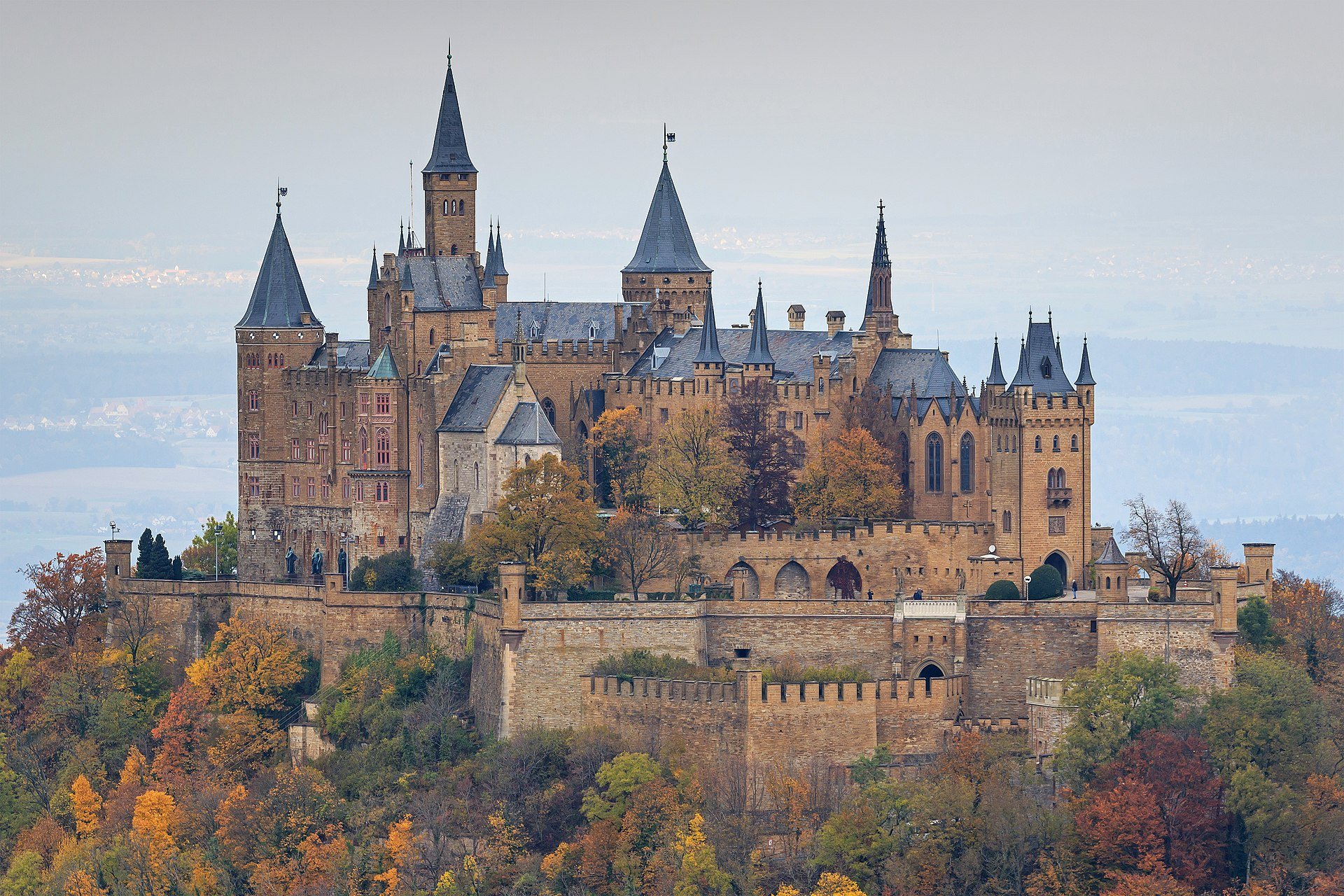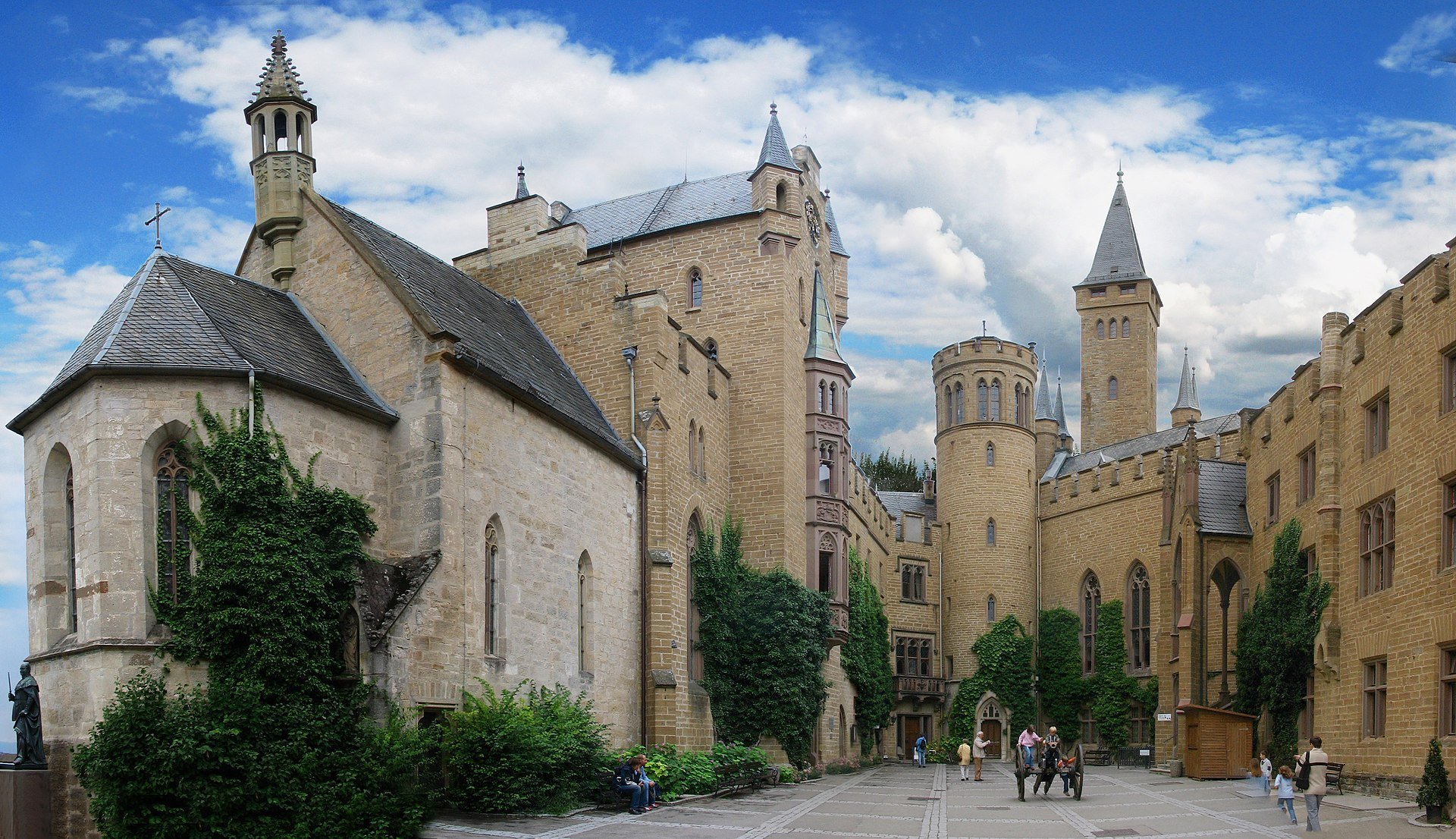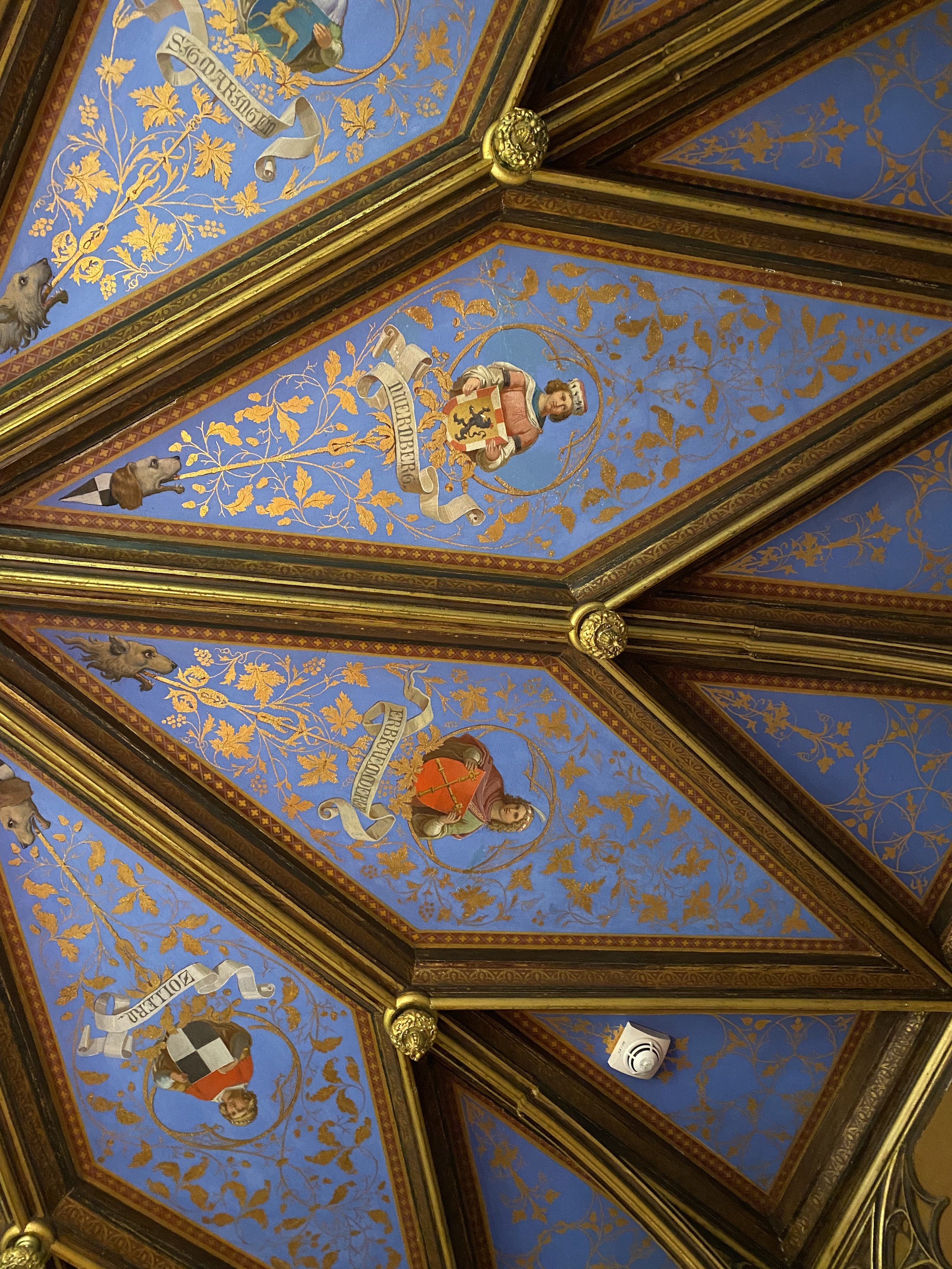Hohenzollern Castle
Writing in his journal in 1844, King Frederick Willam IV of Prussia remembered traveling through southern Germany 25 years earlier as he wanted to know more about his ancestry in the area. He hiked to the top of the largest hill in the area where the ruins of a castle remained and recorded this:
The memory of the year [18]19, to me is exceedingly lovely, and like a beautiful dream, especially the sunset we saw from one of the castle bastions. [...] Now is a desire, a dream of [my] youth, to see Hohenzollern Castle again made habitable.
This was the start of one of the most beautiful and most visited castles in Germany. Two previous castles existed on the site built by the House of Hohenzollern and it was known as the “crown of all castles in Swabia.” In 1423 the castled was completely destroyed after a year-long siege and left in ruins. It was on these ruins that King Frederick felt inspired to rebuild as a tribute to his family.
It has gardens, two chapels — one Catholic and one Protestant — residence and gathering halls and today holds some of the treasures of Prussian royalty including crowns and jewels, uniforms, and even a letter from George Washington to Baron von Steuben, a Hohenzollern relative, for his service in the American Revolutionary War.
The walls were painted to look like tapestry.
Door going into the residence quarters.
The first room you enter shows the family tree covering all the walls from 1871 back 17 generations.
Banquet hall and ballroom, 6 chandeliers that hold 288 candles.
My littles were especially intrigued with the casemates where guards and weapons and food would have been stored. It felt like pathways through a cold dungeon and was the perfect setting to talk about Hohenzollern ghosts and legends, and there are many, but the “White Lady” really grabbed their attention.
The legend of the “White Lady” has been traced back to the late 1300s. Countess Kunlzunde of Orlamunde was a young widow who fell in love with Albrecht of Zollern and Nuremberg. Albrecht told her that he “could not marry her, since there were four eyes In the way.” The countess, thinking the “four eyes” meant her two sons by her former marriage, and maddened by the thought of them as being the only obstacle to the fulfilment of her wedding, killed both of the boys by stabbing them in with a spindle. The “four eyes” that Albrecht meant, however, were his parents who did not approve of a marriage between Albrecht and the countess. After this terrible crime committed by the countess, he turned from her in horror and disgust. The countess subsequently died, overcome with shame and remorse, and forever afterwards haunted the castle of Albrecht. She is reported to roam the halls of the castle and has been seen many times, always bringing disaster and death after her appearance.
Her legend has been used strategically too. When the castle was captured in 1423, the “Maid of Mossinger” dressed in white clothing at night to deliver much needed supplies to those inside, making anyone who saw her believe they were seeing the ghost.
I think we will probably come back to Hohenzollern many times as our family and friends come visit. It is close and everything you imagine a castle to be.
Things I don’t want to forget about our first visit:
It was much colder than home and we were not prepared. I knew the little kids wouldn’t survive so we ended up buying two sweatshirts in the gift shop. Luckily they weren’t expensive and the kids love them.
We opted to take the short hike up to the top rather than the shuttle and the incline had us huffing and puffing, especially Emme who reminded us several times she had only eaton one kiwi for breakfast and that it wasn’t enough!
Nola borrowed a dirndl for pictures up at the castle and knows how to pose. The other kids wanted to “pose” too and we laughed and laughed.
I loved the family tree room! So fascinating! I did not love how drafty and cold it was inside. I cannot even imagine living there with the freezing wind all winter long. But the views really were incredible.






















